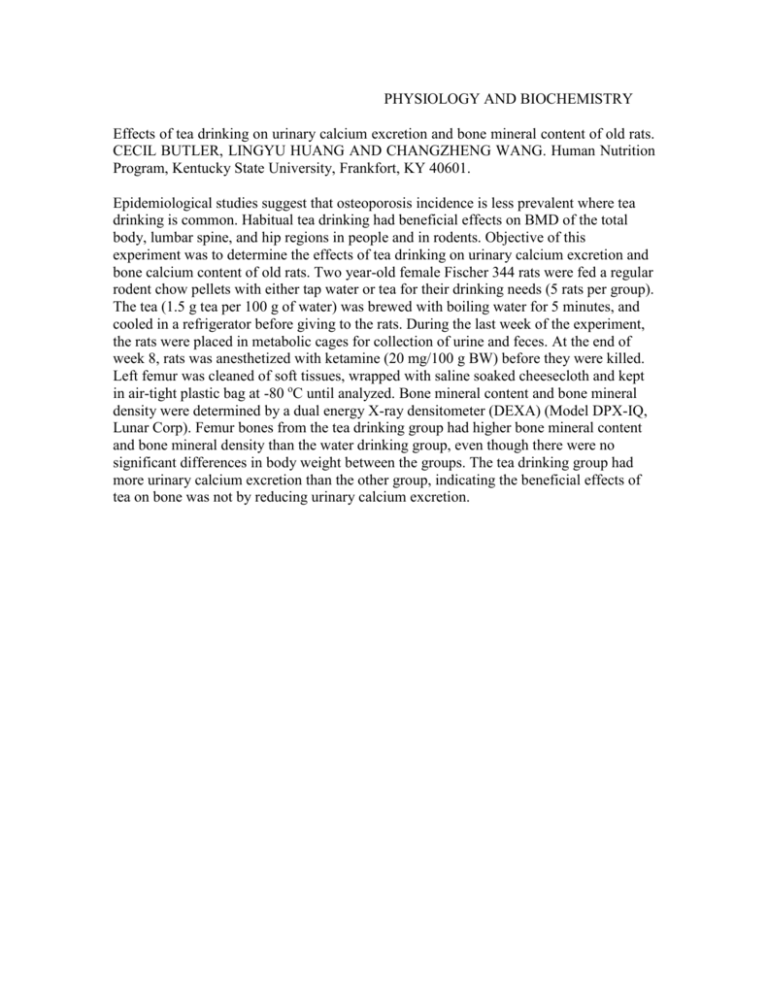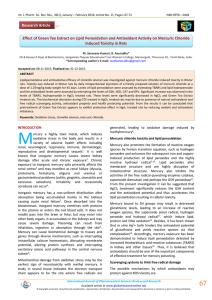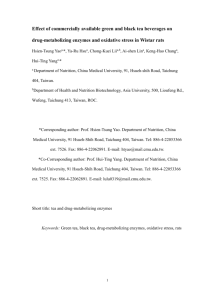physiology and biochemistry - Kentucky Academy of Science
advertisement

PHYSIOLOGY AND BIOCHEMISTRY Effects of tea drinking on urinary calcium excretion and bone mineral content of old rats. CECIL BUTLER, LINGYU HUANG AND CHANGZHENG WANG. Human Nutrition Program, Kentucky State University, Frankfort, KY 40601. Epidemiological studies suggest that osteoporosis incidence is less prevalent where tea drinking is common. Habitual tea drinking had beneficial effects on BMD of the total body, lumbar spine, and hip regions in people and in rodents. Objective of this experiment was to determine the effects of tea drinking on urinary calcium excretion and bone calcium content of old rats. Two year-old female Fischer 344 rats were fed a regular rodent chow pellets with either tap water or tea for their drinking needs (5 rats per group). The tea (1.5 g tea per 100 g of water) was brewed with boiling water for 5 minutes, and cooled in a refrigerator before giving to the rats. During the last week of the experiment, the rats were placed in metabolic cages for collection of urine and feces. At the end of week 8, rats was anesthetized with ketamine (20 mg/100 g BW) before they were killed. Left femur was cleaned of soft tissues, wrapped with saline soaked cheesecloth and kept in air-tight plastic bag at -80 oC until analyzed. Bone mineral content and bone mineral density were determined by a dual energy X-ray densitometer (DEXA) (Model DPX-IQ, Lunar Corp). Femur bones from the tea drinking group had higher bone mineral content and bone mineral density than the water drinking group, even though there were no significant differences in body weight between the groups. The tea drinking group had more urinary calcium excretion than the other group, indicating the beneficial effects of tea on bone was not by reducing urinary calcium excretion.





![2012 [1] Rajika L Dewasurendra, Prapat Suriyaphol, Sumadhya D](http://s3.studylib.net/store/data/006619083_1-f93216c6817d37213cca750ca3003423-300x300.png)




